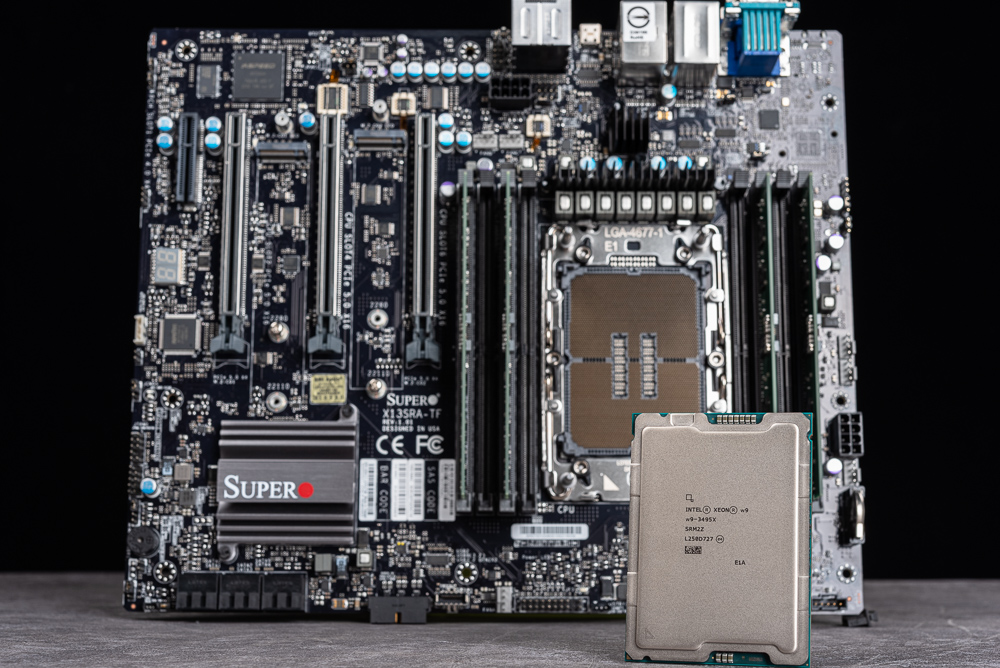
Intel’s next-generation Sapphire Rapids workstation processors, the Xeon W-3400 (350W) and W-2400 (225W), boast up to 56 cores, 8-channel 4TB DDR5 ECC RDIMM, and 112 CPU PCIe 5.0 lanes for expansion. What’s even more impressive is the introduction of the overclockable X-series processors, which enabled Supermicro to release the overclockable workstation motherboard “X13SRA-TF.” By unlocking power consumption and utilizing Active-Core overclocking, the Xeon w9-3495X can achieve a remarkable 35% boost in multi-core processing performance.
Specifications
Size: CEB 12\” x 10.5\”
Processor Support: Intel Xeon W-3400 / W-2400
Processor Pin: LGA-4677 Socket E
Chipset: Intel W790
BIOS: 256MB SPI Flash with AMI BIOS
Memory: 8 x DIMM DDR5, MAX 2TB 3DS ECC Registered RDIMM
Display output: VGA (ASPEED AST2600)
Expansion slot: 3 x PCIe 5.0 x16, 1 x PCIe 4.0 x4
Storage port: 2 x M.2 PCIe 5.0 x4, 6 x SATA
LAN Circuit: Marvell AQC113 10GbE LAN, Intel I210-AT 1GbE LAN
Audio: Realtek ALC888S
USB ports: 2 x USB 2.0 (need expansion), 2 x USB 3.2 Gen1 (need expansion), 1 x USB 3.2 Gen2x2 Type C, 1 x USB 3.2 Gen2x2 Type C (front expansion), 4 x USB 3.2 Gen2 Supermicro
Supermicro X13SRA-TF Overclocking Workstation Motherboard
Supermicro, a server and workstation producer, has introduced a new line of motherboards featuring the W790 chipset, LGA-4677 Socket E pins, and compatibility with Intel Xeon W-3400 / W-2400 processors, which includes the “X13SRA-TF” and “X13SWA-TF” models tested in this evaluation. In essence, the X13SWA-TF fully supports 8-channel memory and provides 112 PCIe 5.0 lanes for expansion purposes.
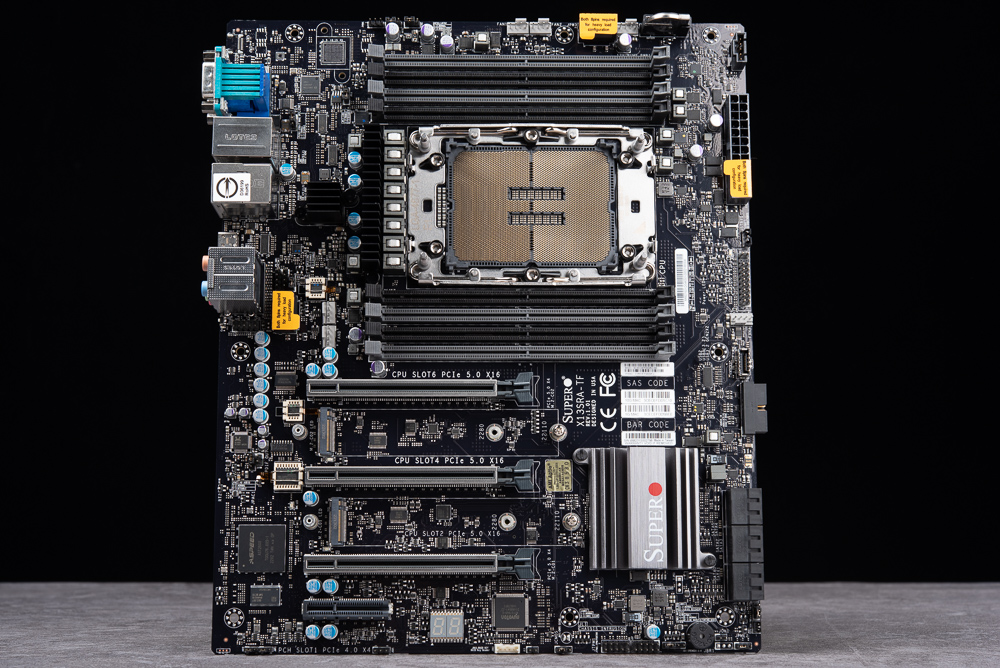
The X13SRA-TF, which was comparatively tested, aligns more with the specs of standard business workstations. This motherboard features a CEB 12″ x 10.5″ form factor, offers 8 DIMM DDR5 memory slots, and supports up to 2TB 3DS ECC Registered RDIMM. For expansion, it includes 3 PCIe 5.0 x16 and 1 PCIe 4.0 x4 slot.
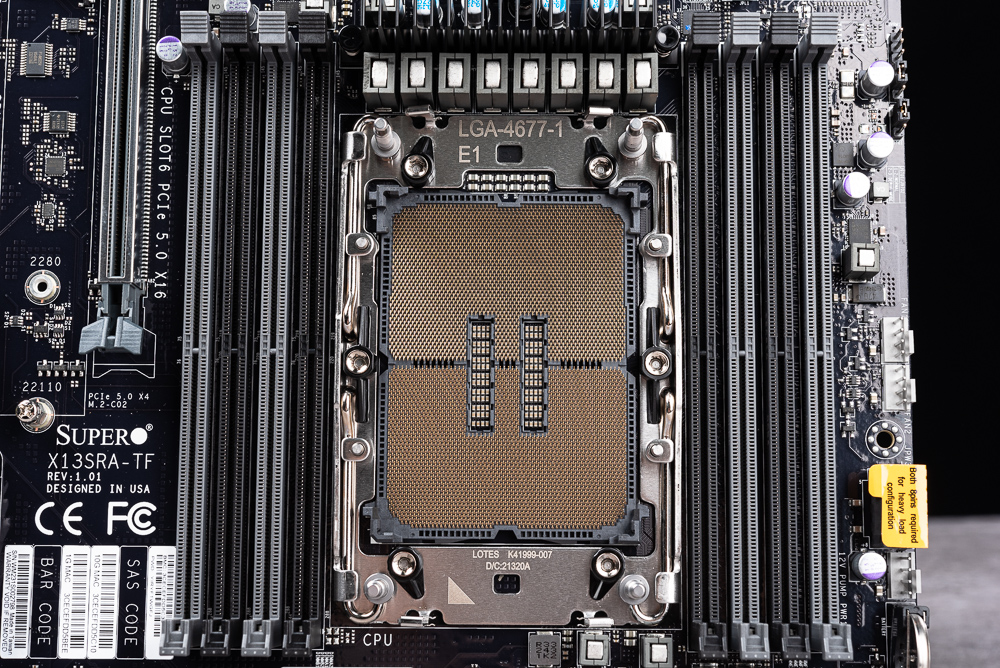
The storage options include 2 M.2 PCIe 5.0 x4, and 6 SATA expansion ports. Additionally, the motherboard features a dual-network configuration with Marvell AQC113 10GbE LAN and Intel I210-AT 1GbE LAN, as well as a Realtek ALC888S audio chip. Moreover, there are two USB 3.2 Gen2x2 Type C ports (front expansion required), bringing the total number of USB ports to 10.
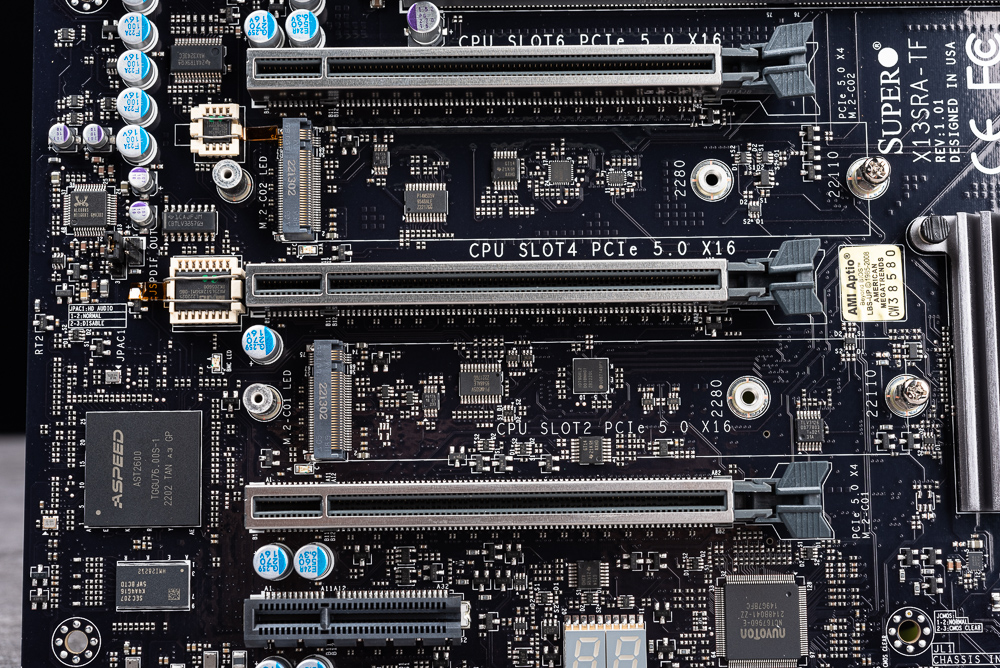
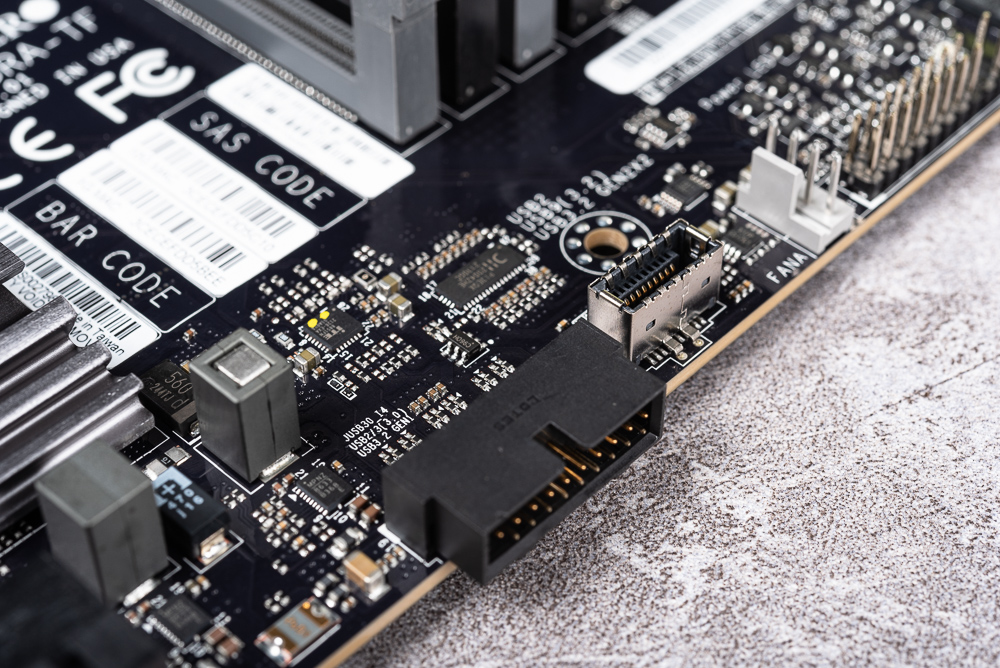
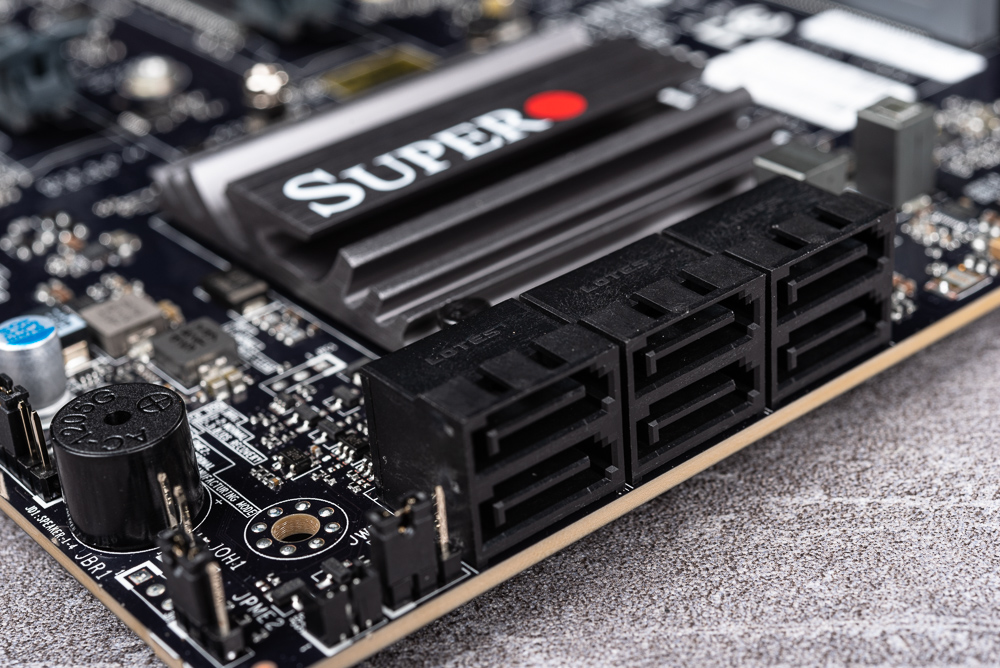
The rear I/O of the motherboard offers VGA output powered by ASPEED AST2600, dual-network 10GbE LAN and 1GbE LAN, 4 USB 3.2 Gen2, and 1 USB 3.2 Gen 2×2 Type C ports, along with a COM port and 3.5mm audio output and input jacks.
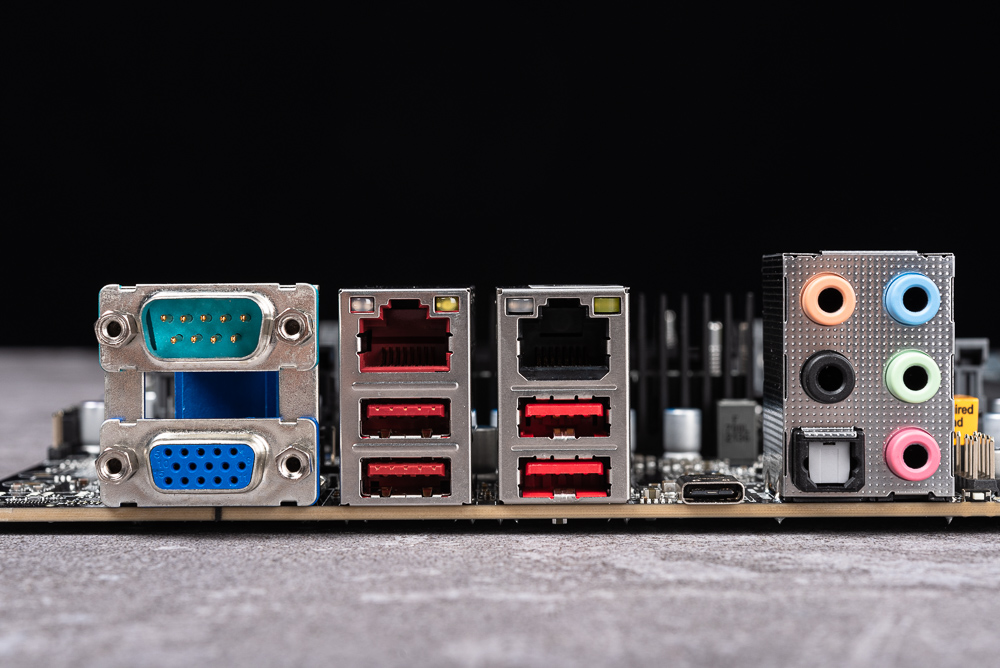
Actual assembly of Intel Xeon w9-3495X and ADATA DDR5 5600 R-DIMM
The Intel Xeon w9-3495X processor employed in this instance boasts up to 56 cores and 112 execution threads. With a default 4.8GHz Turbo clock, it has a base power setting of 350W and a Turbo setting of 420W. The memory utilized is the ADATA DDR5 5600 R-DIMM memory.
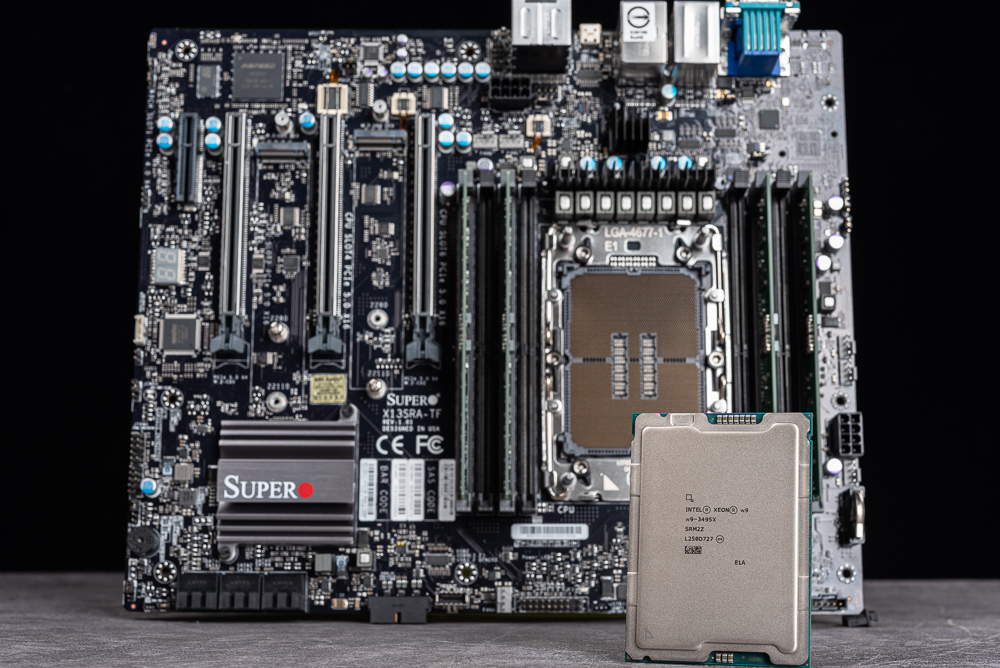
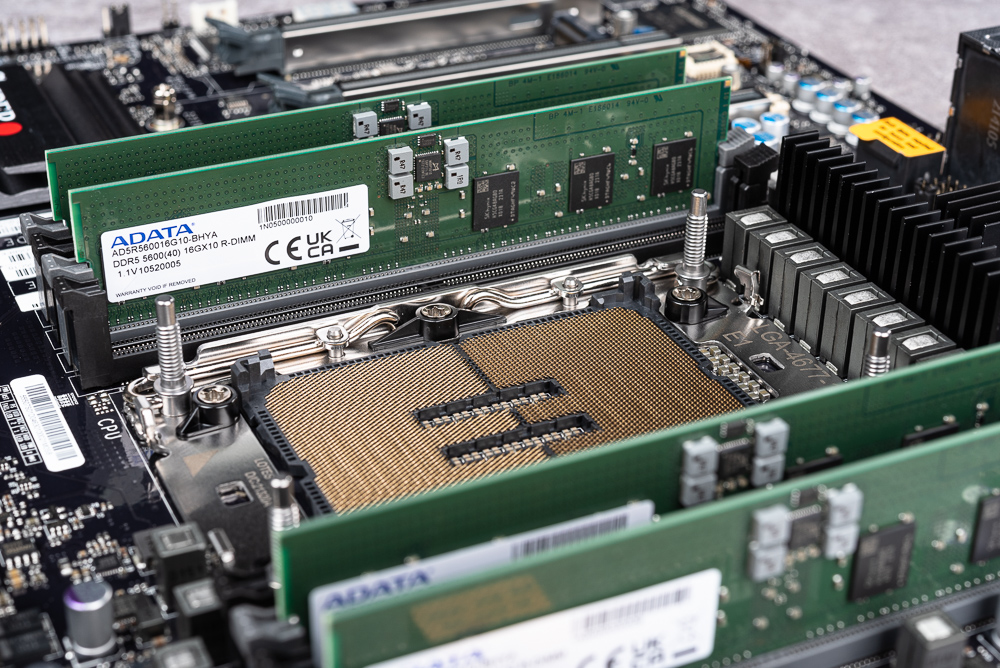
The installation process for the w9-3495X processor differs from that of typical consumer platforms. First, place the processor on the LGA-4677 E1A’s special clip, ensuring the processor’s first pin faces down to the left. Next, apply the thermal paste directly to the heatsink’s base. Secure the processor beneath the heatsink using the thermal paste and the buckle. Finally, insert the combined heatsink and processor into the appropriate hole on the motherboard and lock it in place.
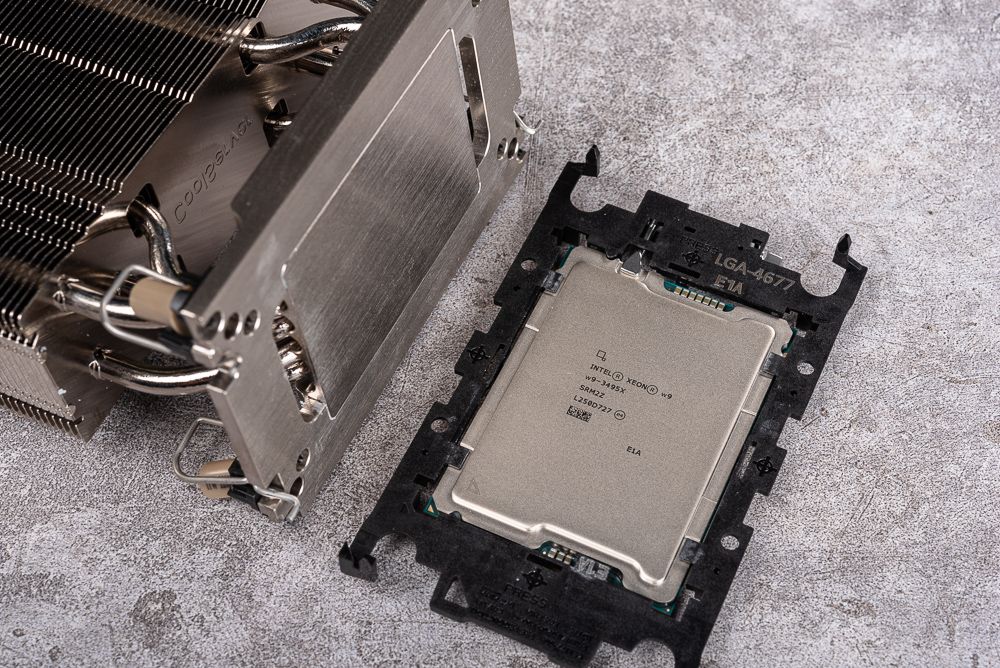
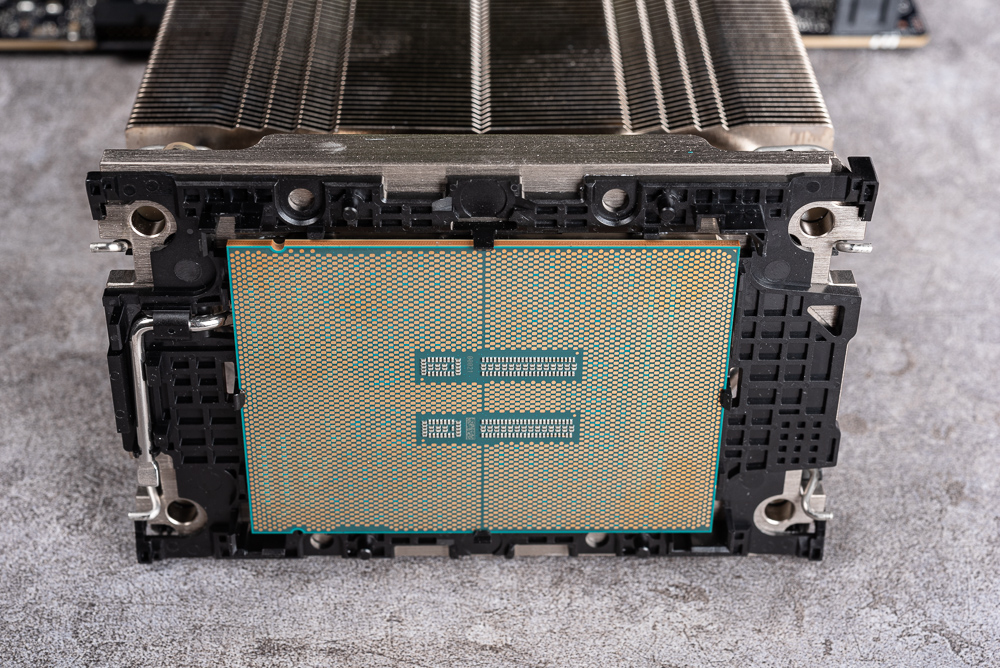
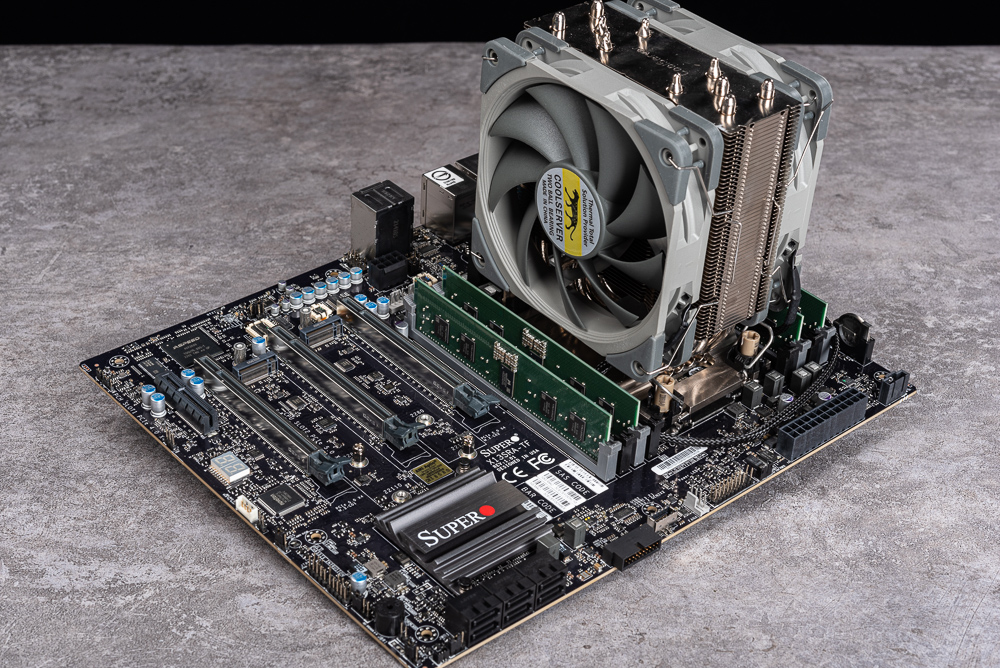
X13SRA-TF BIOS overclocking function and XTU setting
Overclocking can be accomplished using Intel XTU software as well as through the BIOS. For high-core processors like the w9-3495X, it is recommended to adjust the overclocking setting using the By Core Usage method. For voltage, maintain the Adaptive setting to allow the motherboard to manage it.
To access the overclocking function on the X13SRA-TF, enter the BIOS interface and locate the Overclocking feature in the advanced settings. This can be used to make overclocking adjustments for the processor, mesh/ring, uncore, voltage, and more.
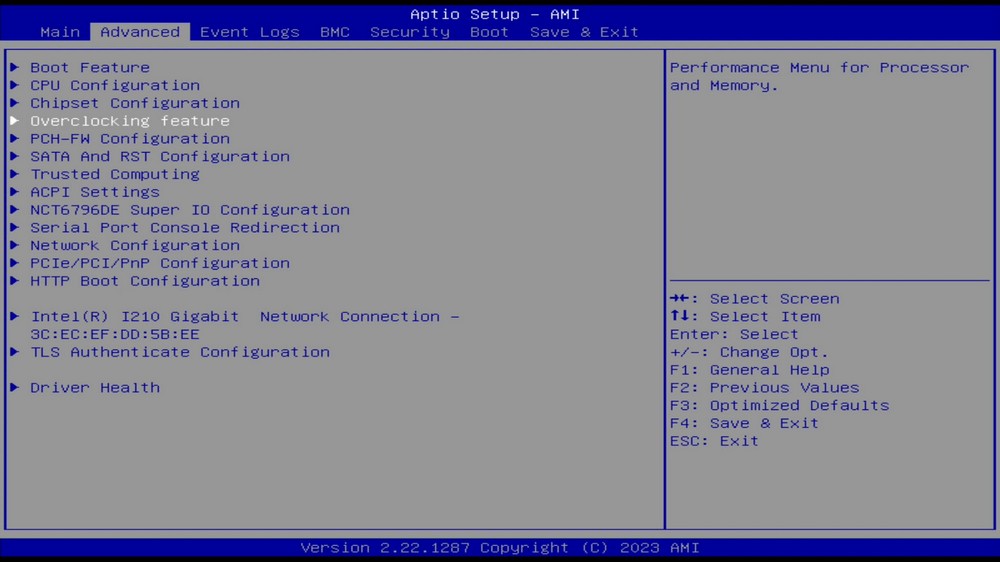
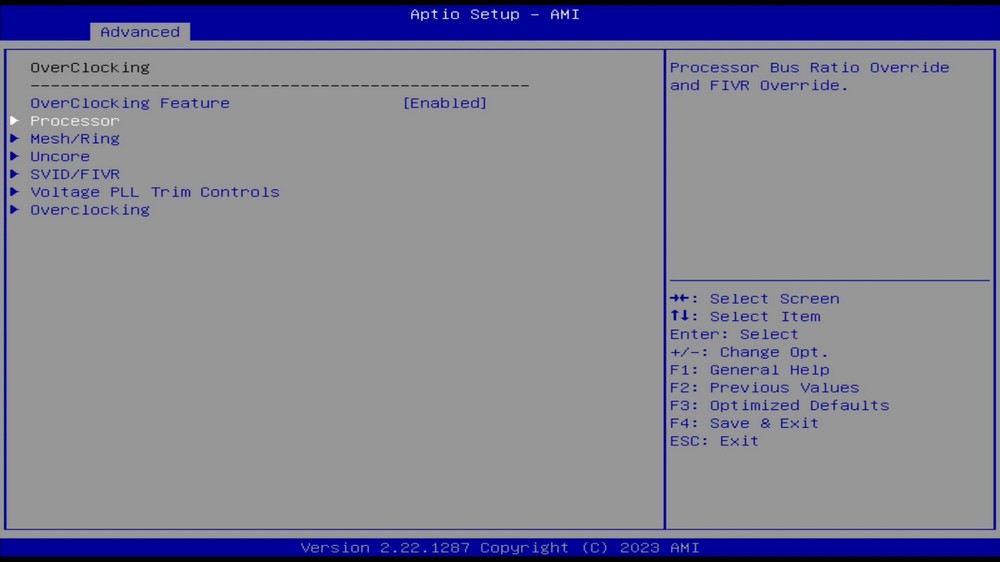
Within the Overclocking > Processor settings, modify the highest OC Ratio to 50 and increase the Per Core Ratio. Next, use the By Core Usage method to set the multipliers: 50 for 2 cores, 46 for 6 cores, and 34 for all cores.
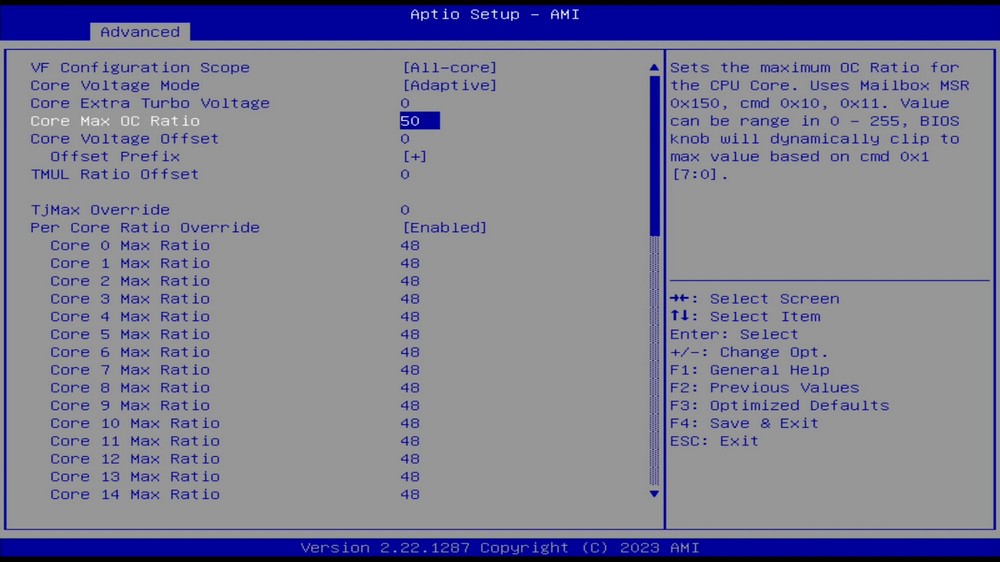
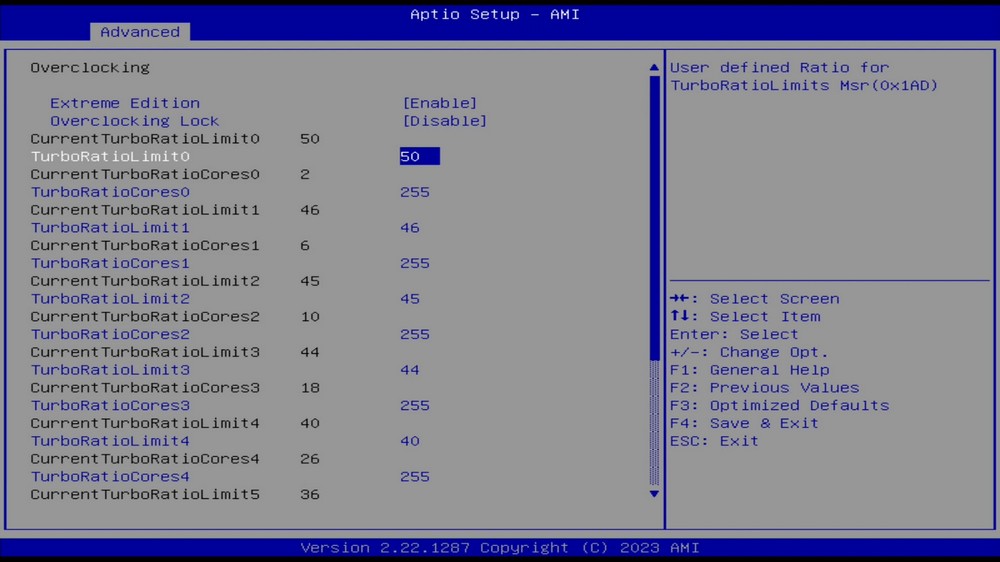
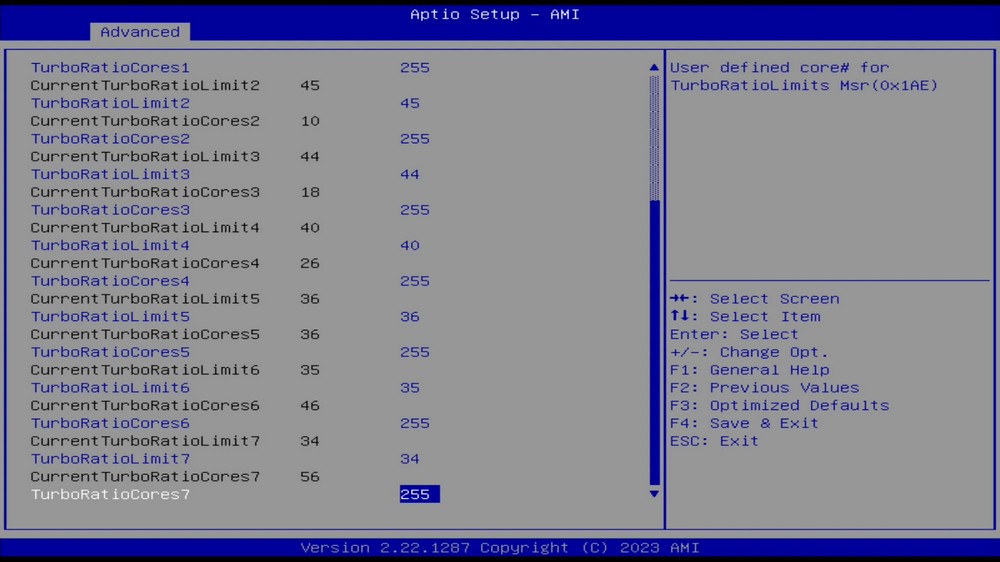
For power management, set the BIOS to Maximum Performance, configure the current limit to the maximum value of 1FFF, and adjust PL1 and PL2 to 800.
Since the highest wattage of the available test platform power supply is limited to 1000W, this setting represents the upper limit of the current platform power supply wattage. The air-cooled radiator can effectively manage the temperature of the w9-3495X with this configuration.
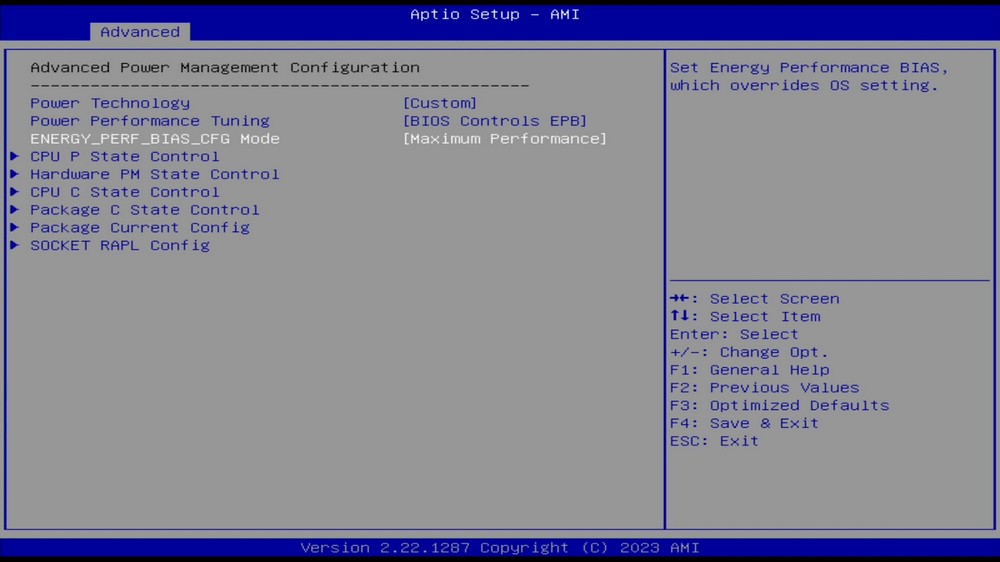
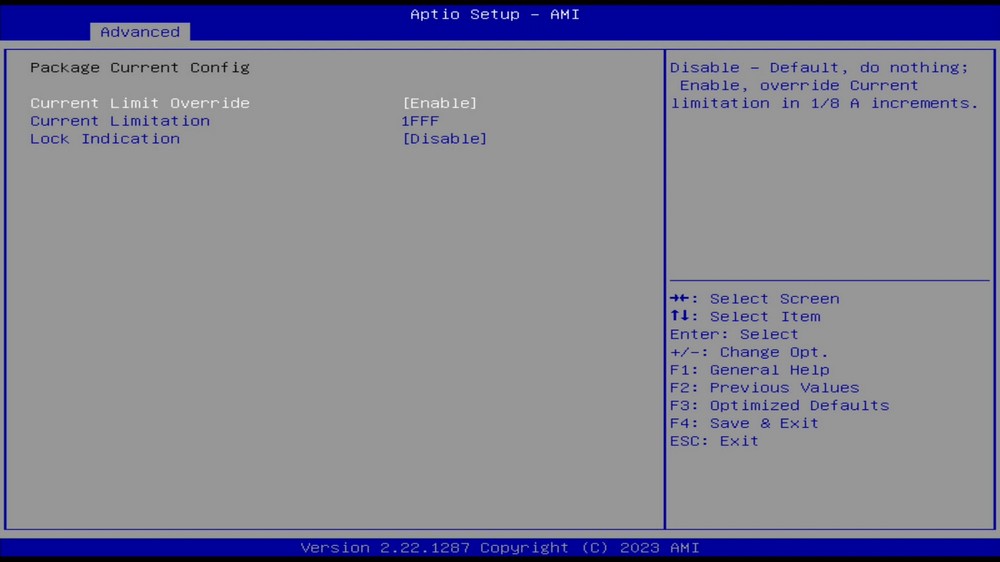
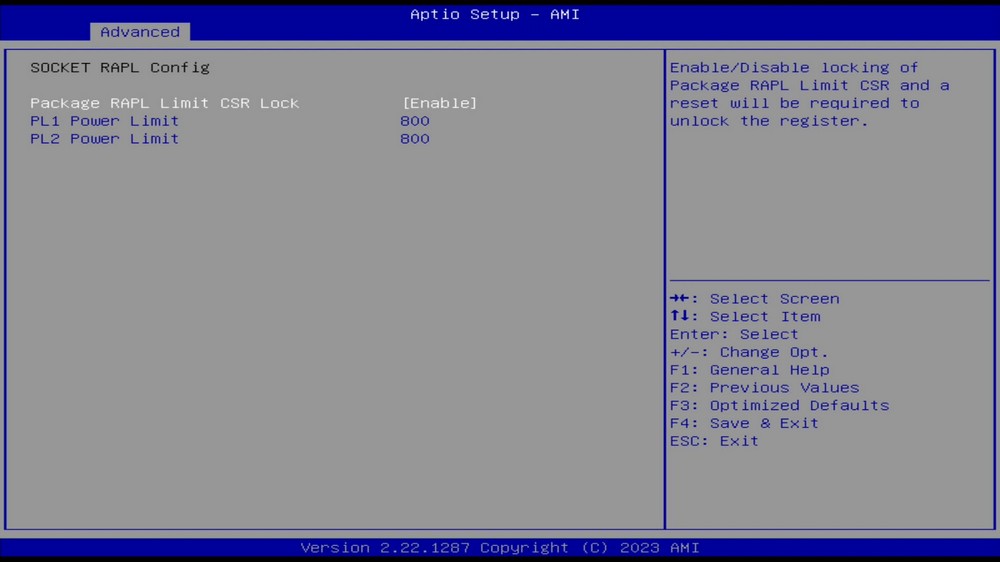
The previously described overclocking configurations can also be implemented using Intel XTU software. You have the flexibility to modify settings such as PL1, PL2, maximum current, Active Cores overclocking adjustments, and Per-Core adjustments within the software.
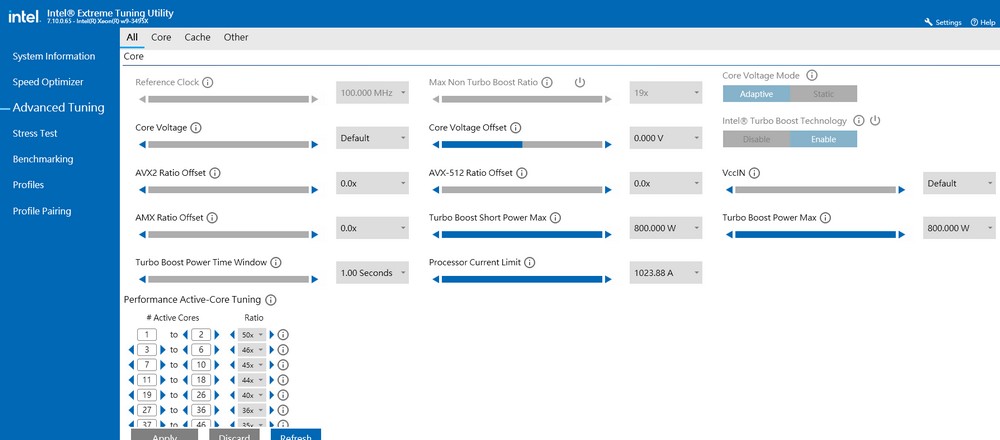
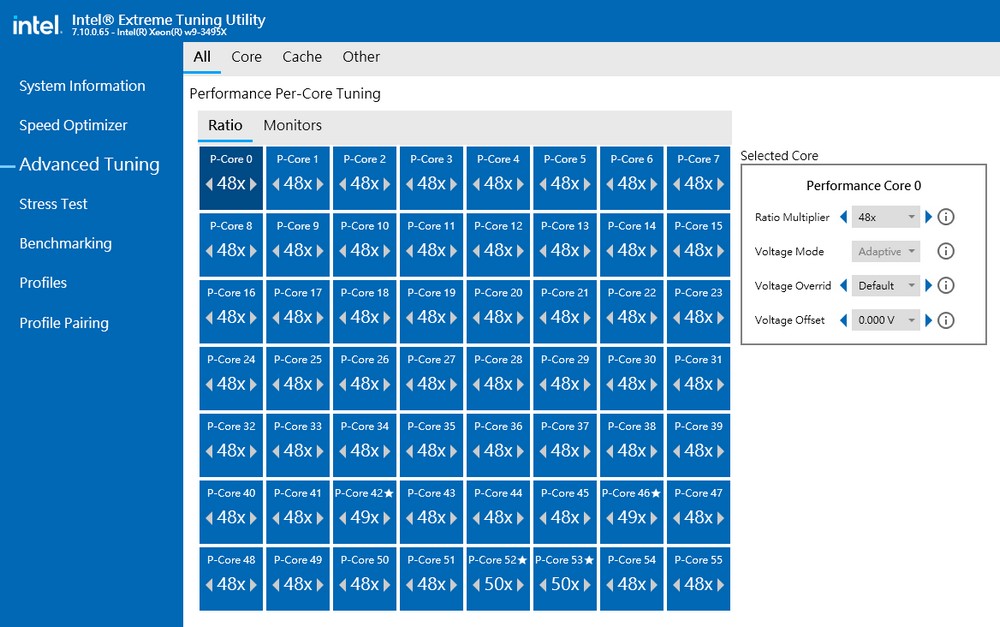
Supermicro X13SRA-TF Motherboard Performance
In terms of performance testing, various common CPU rendering, computer performance tests, and game performance benchmarks are utilized. The overclocking settings for testing are By Core Usage with dual-core at 5.0GHz, all-core at 4.0GHz, and DDR5 5600 memory clock. However, after fine-tuning, the actual overclocking can reach an all-core operation of 4.6GHz.
Test Platform
Processor: Intel Xeon w9-3495X
Motherboard: Supermicro X13SRA-TF
Memory: ADATA DDR5 5600 R-DIMM 16GB x4
Display Card: NVIDIA GeForce RTX 4080
System Disk: Solidigm P41 Plus 1TB PCIe 4.0 SSD
Radiator: Air-cooled single-tower double-
fan Power supply: FSP CANNON PRO 2000W
Operating system: Windows 10 Pro
Using CPU-Z to view the Intel Xeon w9-3495X processor information, we can see that it is a Sapphire Rapids 10nm process 56-core 112-thread processor. The test is conducted on a Supermicro X13SRA-TF motherboard with the BIOS updated to version 1.1. The memory used is ADATA DDR5 5600 R-DIMM 16GB x4.
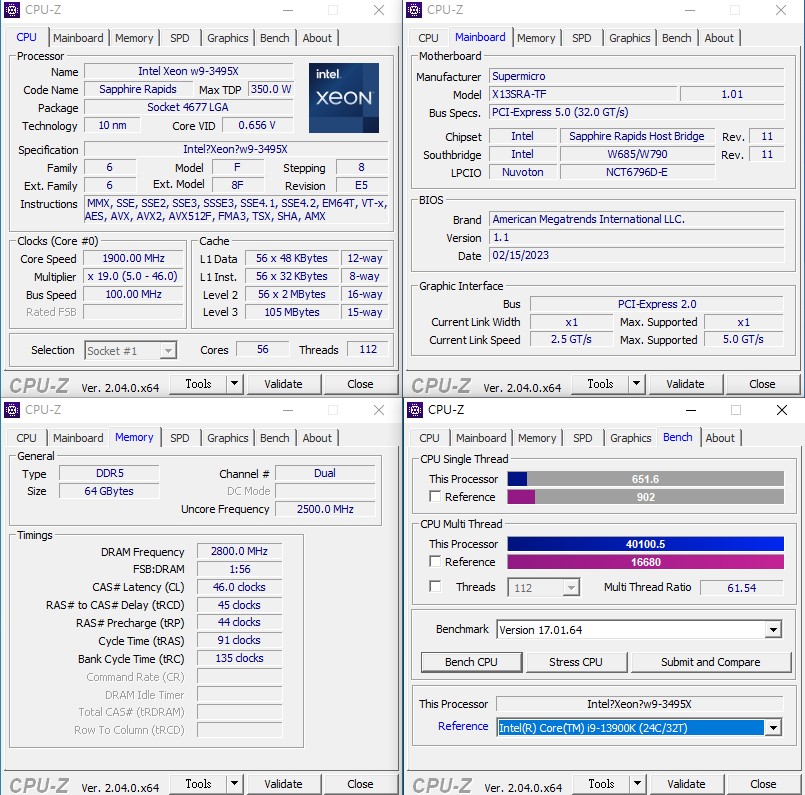
CINEBENCH R20 and R23, developed by MAXON and based on Cinema 4D, are used to evaluate the 3D graphics performance of computer processors. They are widely recognized as popular testing software for assessing CPU computing performance.
After overclocking, the w9-3495X achieves a CPU score of 31,361 pts in the R20 test and 83,426 pts in the R23 test. Its single-core performance is 598 pts and 1,535 pts, respectively.
When using the default Turbo setting for the w9-3495X processor, the CINEBENCH R23 CPU score is only 61,581 pts. This represents a 35% improvement in multi-core performance when compared to the overclocked score.
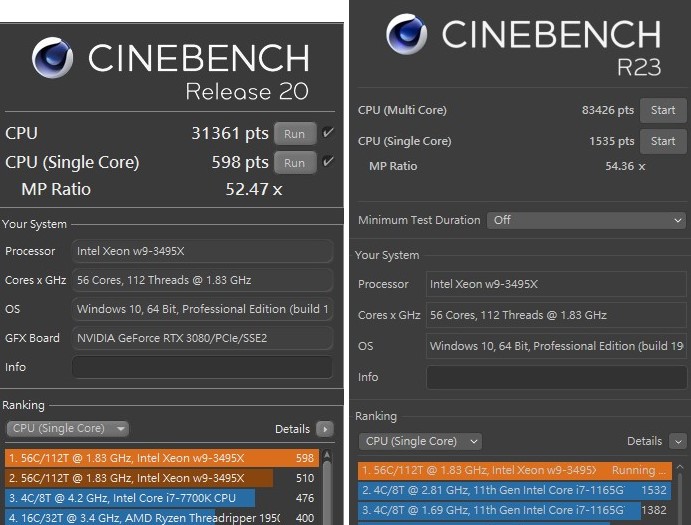
V-Ray Benchmark, developed by Chaos Group, is a ray rendering software designed based on the laws of physics. This tool can independently perform calculation tests on ray-traced rendered images for both CPU and GPU.
The w9-3495X demonstrates impressive computing performance, achieving a high score of 61,729 vsamples.

Blender is a cross-platform, open-source 3D creation tool that supports CPU and GPU rendering acceleration functions. It is versatile, enabling various 3D operations such as modeling, rigging, animation, simulation, rendering, compositing, and motion tracking.
In the Blender Benchmark 3.1.0 test, the w9-3495X demonstrates solid performance, achieving a sample rate per minute of 653.38 for the monster scene, 381.19 for the junkshop scene, and 51.84 for the classroom scene.
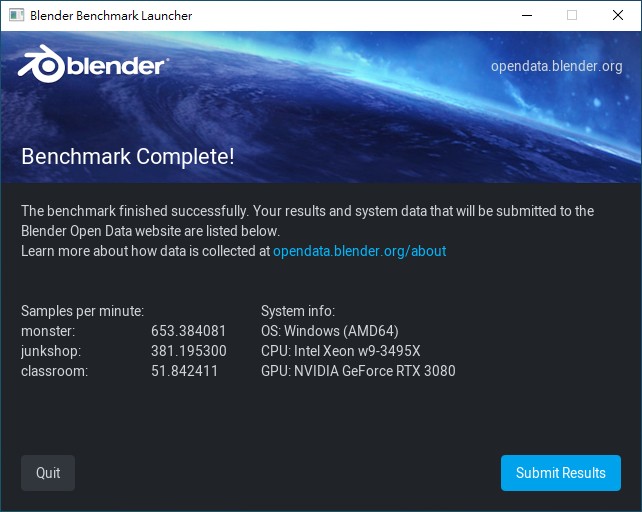
In the AIDA64 memory and cache test using ADATA DDR5 5600 R-DIMM 16GB x4 memory on a Supermicro X13SRA-TF motherboard, the memory performance metrics are as follows: read speed at 139.47 GB/s, write speed at 100.48 GB/s, copy speed at 114.8 GB/s, and latency at 94.3 ns.
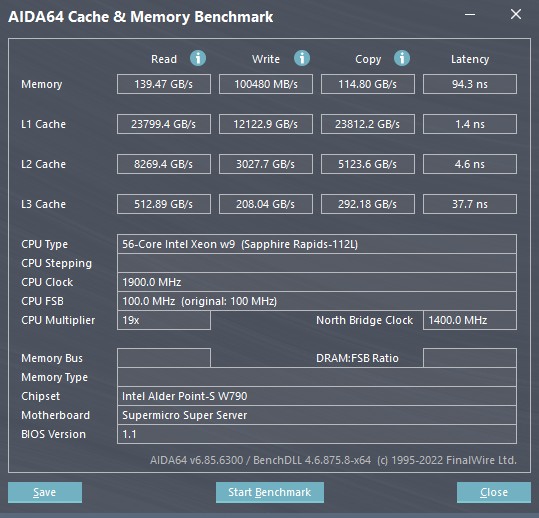
Summary
The Supermicro X13SRA-TF motherboard allows commercial workstations to harness the remarkable multi-core performance of the Intel Xeon w9-3495X. With 56 cores, 112 threads, all-core overclocking to 4.0GHz, and dual-core 5.0GHz by Core Usage Turbo setting, the CPU’s multi-core performance can be increased by 35%. Additionally, it supports ADATA DDR5 5600 R-DIMM high-frequency memory.
The w9-3495X’s overclocking capability is not limited to an all-core 4.0GHz, but with such an overclocking Turbo setting, the entire platform’s power consumption can exceed 900W. This necessitates not only a higher wattage power supply but also better cooling to surpass an all-core 4.6GHz.
Intel’s Sapphire Rapids Xeon workstation processors are primarily developed for professional domains like 3D creation, video special effects, game development, engineering product design CAD/CAE/simulation/AEC, data mining/scientific computing/deep learning, and more. They deliver exceptional performance for media and entertainment, engineering, and data science professionals.
The overclockable Xeon processors of this generation, when paired with the Supermicro X13SRA-TF motherboard, can achieve enhanced performance through a higher Turbo overclocking mechanism. Moreover, they provide ample PCIe 5.0 expansion channels to meet the high-performance and extensive expansion demands required for professional work.
If this article is helpful for you, please share this article with your friends on social media. Thank you!
This article is based on the personality of the reviews. You are responsible for fact-checking if the contents are not facts or accurate.
Title: Boosting Workstation Performance! The Supermicro X13SRA-TF, when combined with the 56-core Xeon w9-3495X, demonstrated a 32% enhancement in multi-core performance